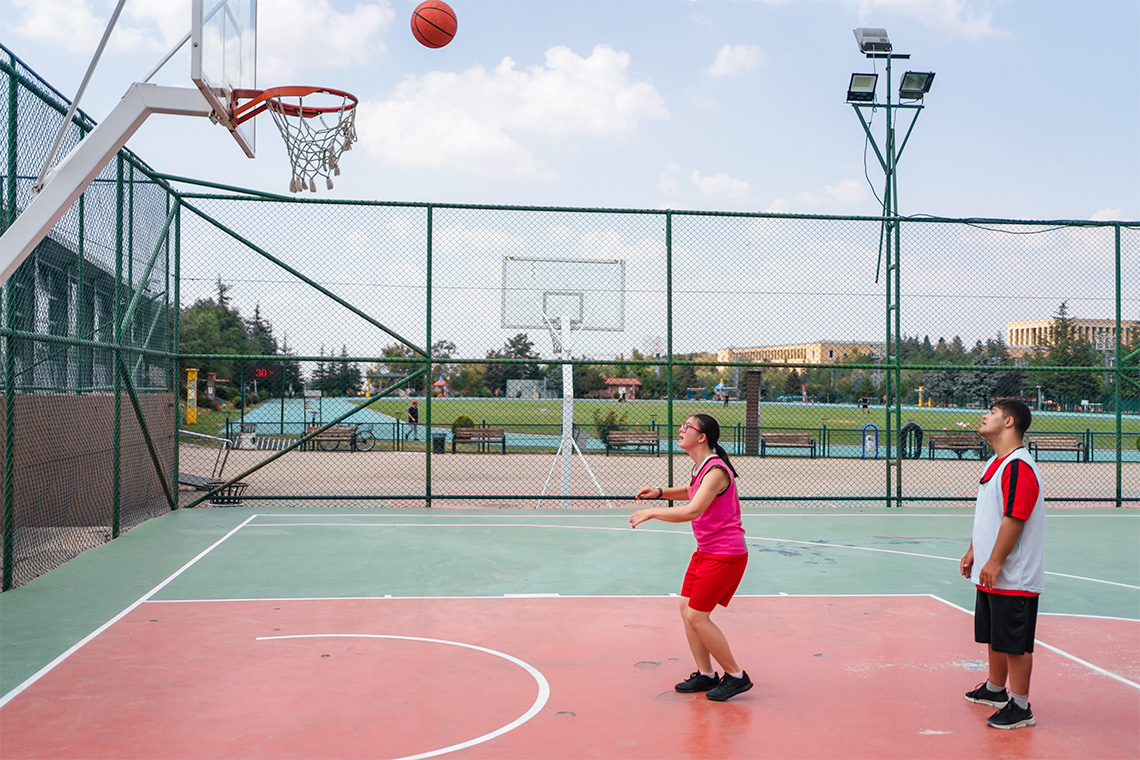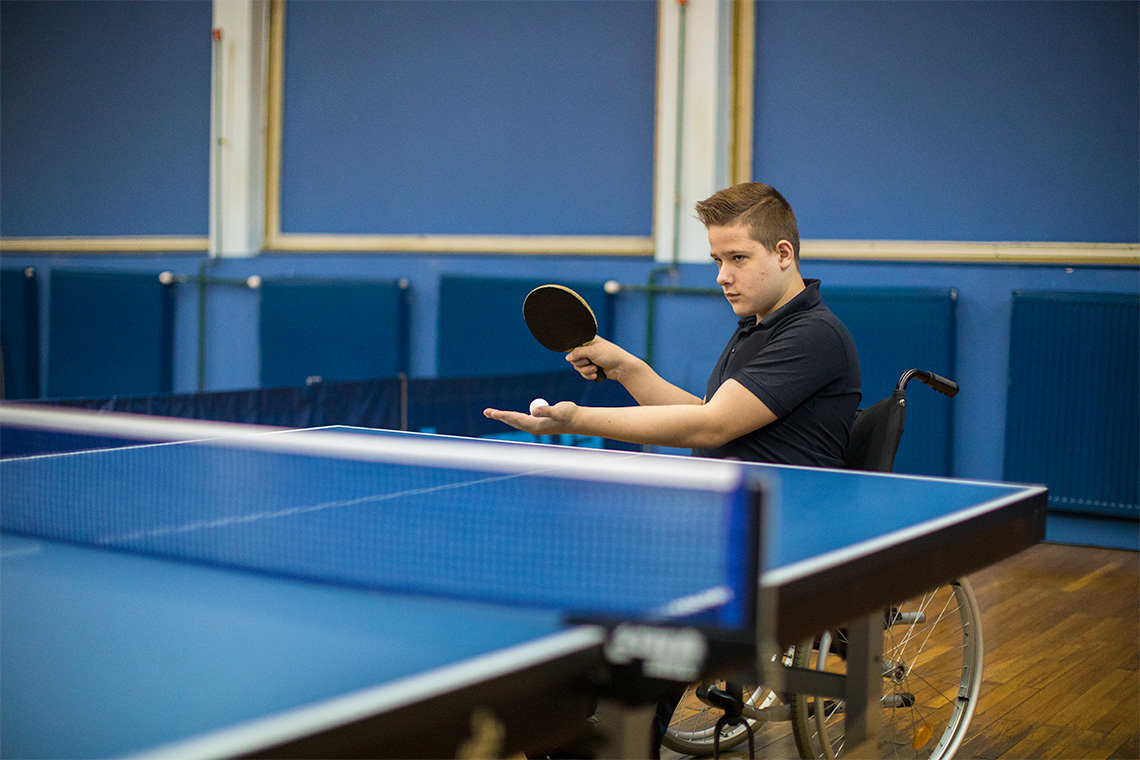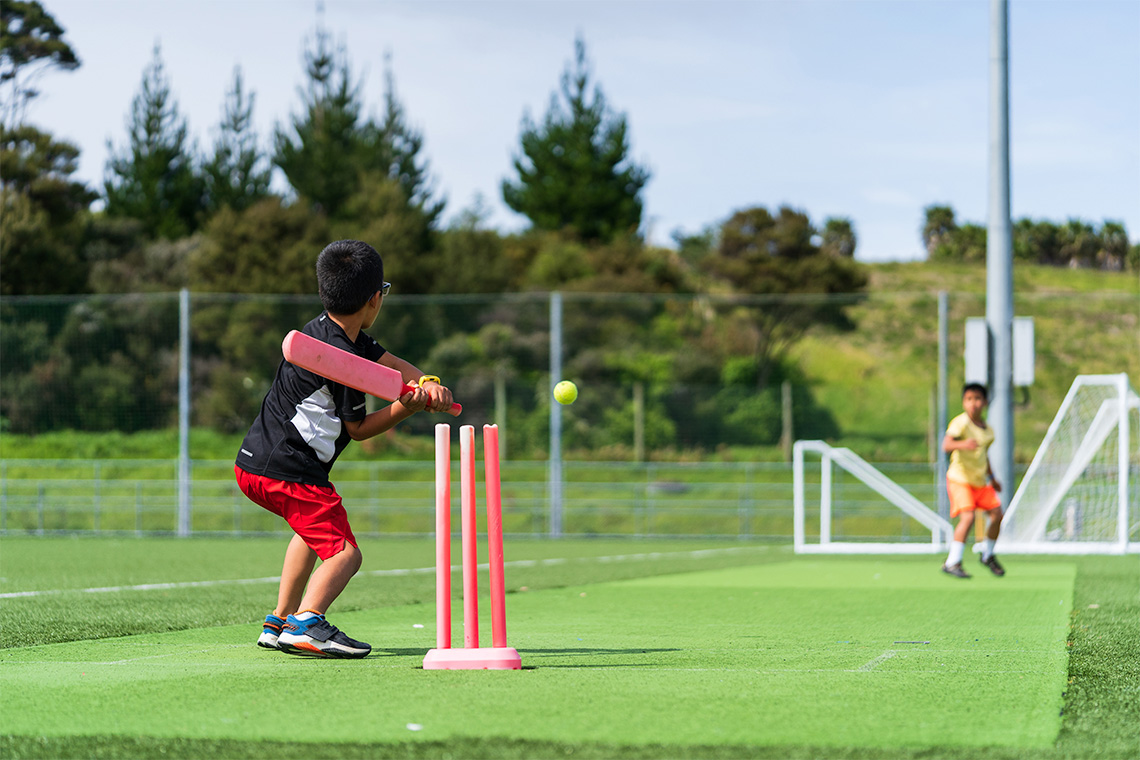Equipment
Did you know?
Explore the following video.
Did you know that a basketball needs to pass specific tests to be used in an NBA game?
The ball is made with leather and filled up with air so that it measures a specific distance all the way around the ball.
Are you ready to learn about important changes in sports and everyday life? Let’s begin!
What type of equipment?
Each sport uses different kinds of equipment.
Explore the following images of people playing sports. What do you notice?
Brainstorm
After exploring the images, check out the following activity:
-
Choose two sports.
Note: You may select from the examples provided or use any two of your own choice.
-
Respond to the following questions:
- What kind of equipment does each sport use?
- What is similar and different about the equipment?
- Record your responses. You may draw, write, create an audio recording, or use another method of your choice.
Complete the Sports Equipment Activity in your notebook or using the following fillable and printable document. If you would like, you can use speech-to-text or audio recording tools to record your thoughts.
 Press the ‘Activity’ button to access the Sports Equipment Activity.
Activity
(Open PDF in a new window)
Press the ‘Activity’ button to access the Sports Equipment Activity.
Activity
(Open PDF in a new window)
The story of the basketball
One piece of important equipment we need to play basketball is the ball!
The ball has been made of leather since the invention of the game in 1891.

Evolution of the basketball
Eight basketball designs from 1891 to 2021. The basketballs vary with shades of brown and orange and indented lines. The 1891 basketball has single indented lines, similar to a volleyball. The 1894 design has less indented lines and a cross-stitch along the top. The 1937 design has darker indented grooves and double lines. The 1950 basketball has lighter double indented lines. The 1971 basketball has a singular indented line. The 1984 basketball has dark single indented lines. The 2006 basketball has dark curved indented lines. The 2021 design has dark singular indented and curved lines that wrap around the basketball.
However, over time a few things have changed, such as:
- the design
- the steps followed to make the ball
Take a moment and think about what you’ve learned so far!
Ball design
Let’s explore an example process showing how basketballs are made. What do you notice? What do you wonder?
Fun fact

The floors of NBA basketball courts are made of maple wood. Maple is a type of wood that is strong and durable enough so that it doesn’t get ruined when players run across and dribble the ball on it regularly. 29 out of 30 NBA courts are made from Maple wood. Boston's court is made from Oak wood.
Also, NBA teams must replace their floors every ten years.
Source:
CBC/Radio Canada. (n.d.). Think You Know Everything About Basketball?. CBC Kids | Olympic Games Tokyo 2020. https://www.cbc.ca/cbckids/olympics/tokyo2020/blog/think-you-know-everything-about-basketball
Before the game
Let’s explore what happens after the leather has been cut and sewn into a ball shape and sent to a testing centre.
Ball on the court
Step 1: Inflation
The balls are filled with air at inflation stations.
Then, someone checks the pressure of each ball using a tool called a gauge.
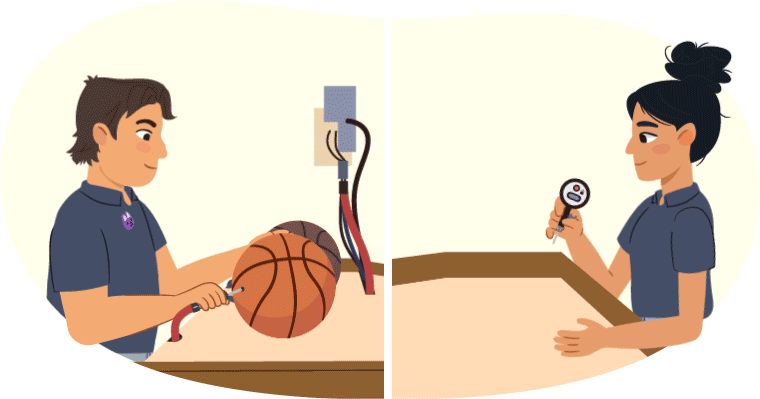
Press Pressure to access the definition.
Pressure: the force of air pushing against an object.
The more air you pump into a ball, the more force, or pressure, will push against the inside of the ball. There's only so much space for air in the ball - add too much and the ball might pop!
Step 2: Measurement
Next, someone measures the distance around the ball. Each ball should measure the same.
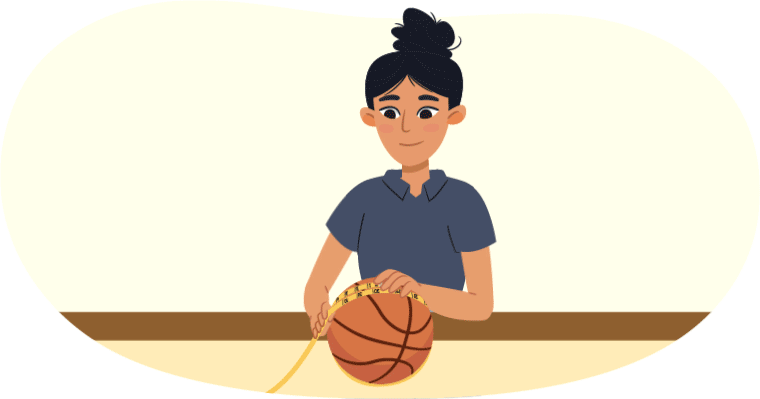
Step 3: Drop test
Then, someone does a “vertical test.”
This means that the ball is dropped from a specific height, and it must bounce back up to a specific height.
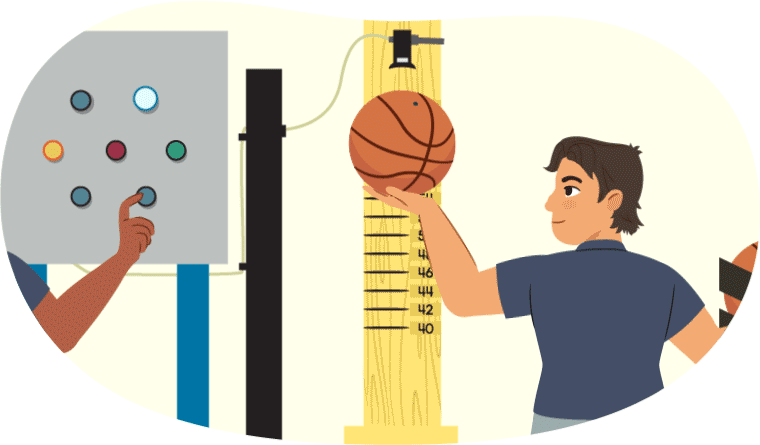
Step 4: Practise
The ball is bounced against a wall by a machine.
Finally, the ball is sent to a practice. Players use the ball during practice again and again.
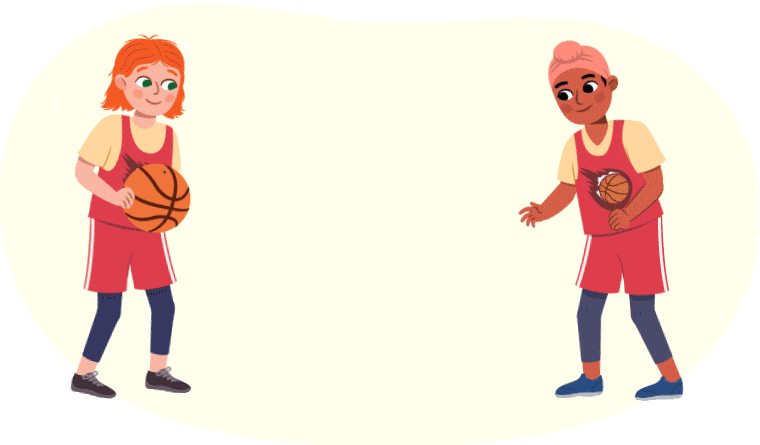
The ball is ready for an official game once it changes colour from orange to brown!
Once they are the right colour, three of the balls are selected for the referee.
The referee chooses the basketball for the game.
Press Referee to access the definition.
Referee: a person who carefully watches a sports game to make sure the players are following the rules.
Pause and reflect
Reflect on the following questions:
- Did you have a favourite step in the making of a basketball?
- Were there any steps that surprised you?
Share your thoughts with a partner, if possible.
Profile
Magic Johnson
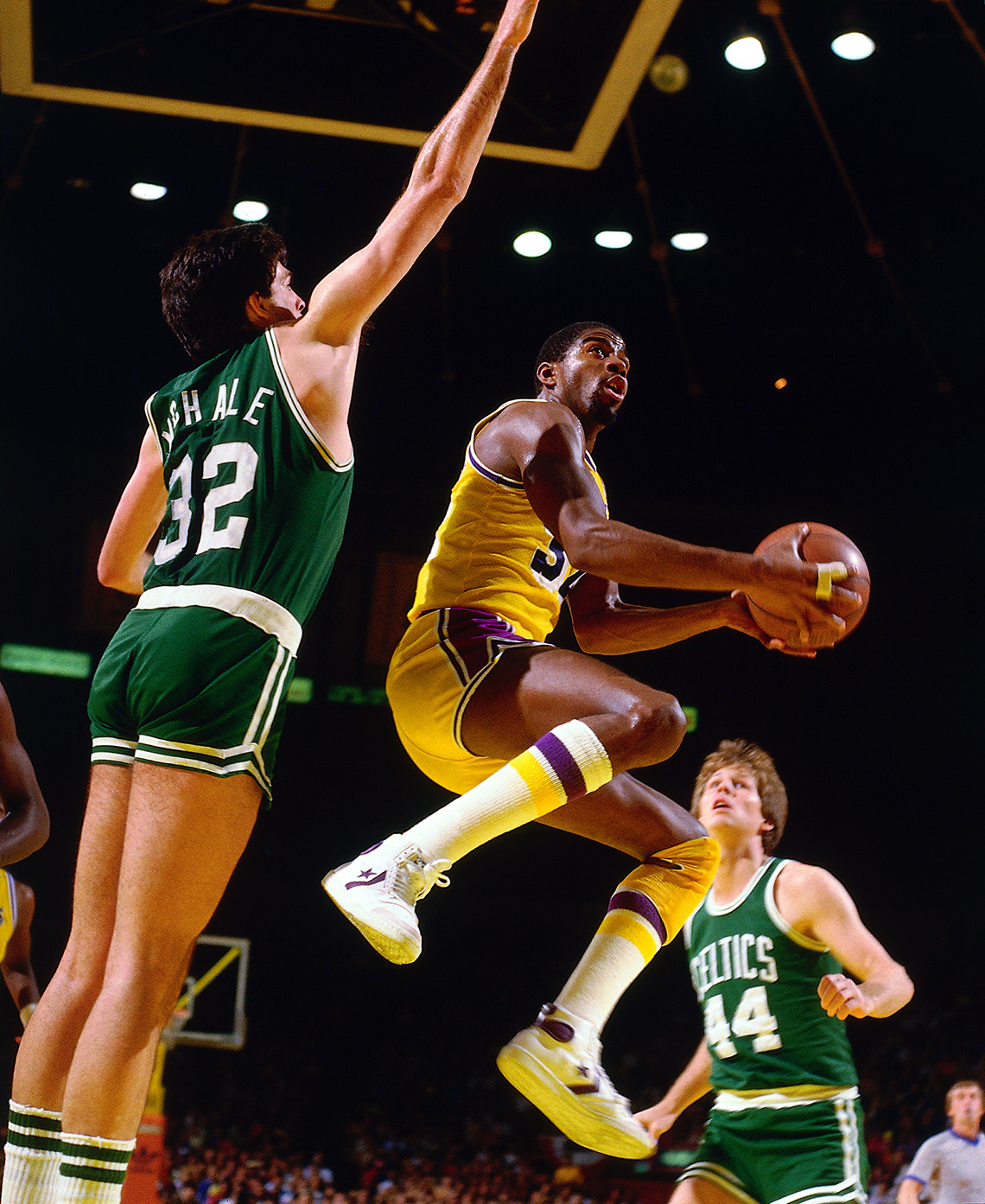
Magic Johnson #32 of the Los Angeles Lakers (1983) jumps up to dunk the basketball during a game against the Boston Celtics. Kevin McHale, #32 of the Boston Celtics, jumps and stretches an arm out to defend against Johnson. Danny Ainge #44 of the Boston Celtics (1983) runs up from behind.
Earvin “Magic” Johnson played with the Los Angeles Lakers for 13 seasons over the course of his 13-year NBA career (1979-1996). Johnson was also a member of the original Olympic Dream Team, who won a gold medal at the 1992 Olympics in Barcelona. During his time with the NBA, he won five NBA Championships, an NCAA Championship, and is considered to be one of the 50 greatest players in NBA history. He worked hard to develop his skills, support his teammates, and be a leader on the court.
In September 2022, Magic Johnson was welcomed into the Naismith Memorial Basketball Hall of Fame.
“You’re the only one who can make the difference. Whatever your dream is, go for it.”
– Magic Johnson
Source:
NBA.com Staff. (2021, September 14). Legends profile: Magic Johnson. NBA.com. https://www.nba.com/news/history-nba-legend-magic-johnson
The basketball

In this learning activity, we have explored how a basketball is made. Let's review what we have learned!
Pause and reflect
Why do you think it is important that each step is followed correctly while making a basketball?
Are there any steps that are more important than others? Why or why not?
Share your thoughts with a partner, if possible.
Great job! Think about how you might use what you've learned about changes and innovation in your own life. Catch you next time!

